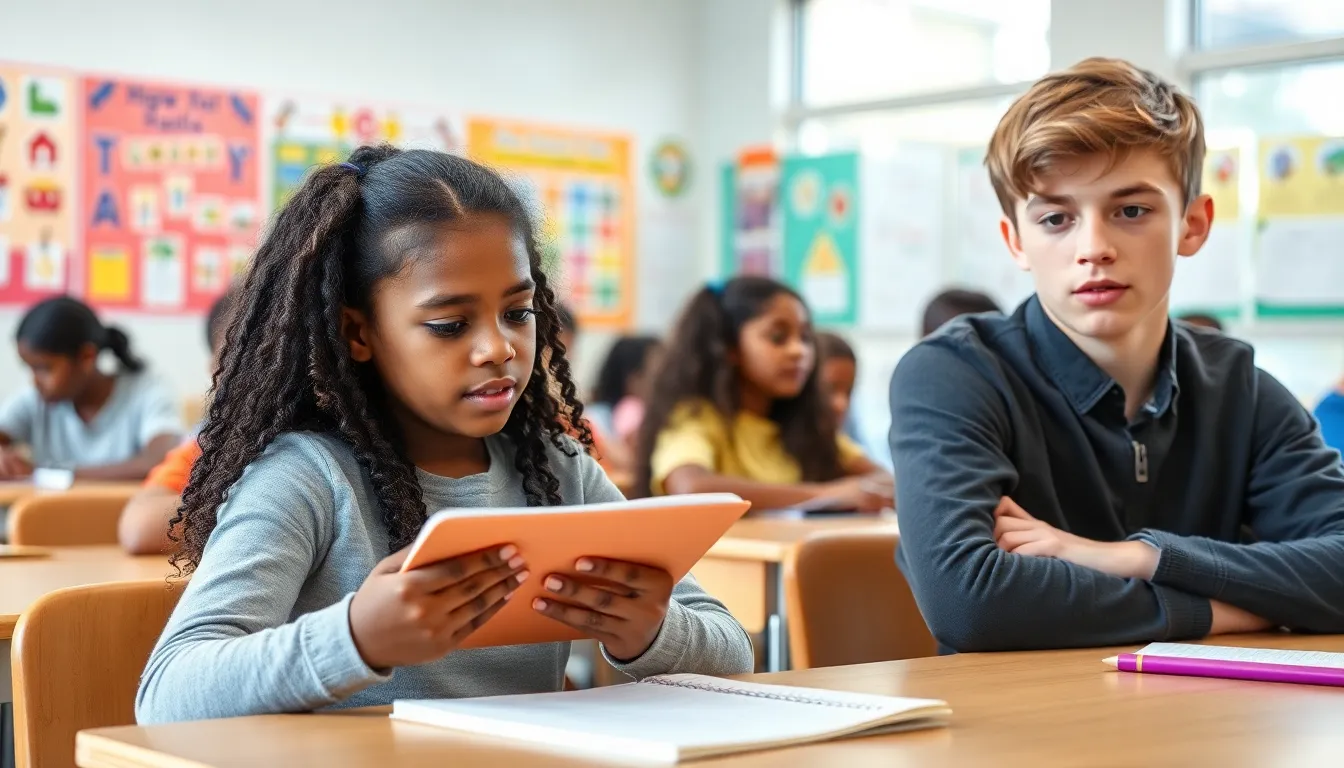In a world where students juggle assignments, exams, and the occasional existential crisis, self-assessment might just be the superhero they didn’t know they needed. Imagine a tool that empowers students to reflect on their learning, identify strengths, and tackle weaknesses—all while avoiding the dreaded “I forgot to study” panic. Sounds like magic, right?
Student Self-Assessment
Student self-assessment serves as a crucial process for promoting independent learning and enhancing academic performance. Engaging in self-assessment allows students to evaluate their understanding and skills, leading to meaningful insights.
Definition and Purpose
Self-assessment refers to the process where students reflect on their own performance and progress. It involves recognizing what they know and identifying areas needing improvement. The purpose is to foster self-awareness in learning. This process encourages students to take ownership of their education, guiding them to set realistic goals and develop effective strategies for success.
Importance in Education
Self-assessment plays a vital role in educational settings. It enhances critical thinking and reflection skills. Students who engage in self-assessment demonstrate increased motivation and ownership in their learning journeys. Regular self-assessment helps educators identify gaps in understanding. It also facilitates tailored interventions to support students in their academic growth. By incorporating self-assessment, education systems promote a culture of continuous improvement and lifelong learning.
Benefits of Student Self-Assessment

Student self-assessment offers several advantages that enhance the educational experience. By engaging in this practice, learners gain valuable insights into their progress and abilities.
Enhancing Learning Outcomes
Research shows that self-assessment significantly improves learning outcomes. Students who assess their own work identify areas needing improvement more effectively. This awareness leads to targeted study efforts and better retention of information. Engaging in feedback loops also helps students set achievable goals for themselves. Improvement in academic performance often follows increased self-efficacy, as learners feel more in control of their learning journeys.
Promoting Self-Reflection
Self-reflection emerges as a critical benefit of student self-assessment. Through reflecting on their accomplishments and setbacks, students develop a deeper understanding of their learning processes. Critical thinking skills sharpen as they analyze their strengths and weaknesses. They learn to ask meaningful questions about their achievements and areas for growth. Self-reflection cultivates resilience, as students confront challenges head-on and adjust their strategies accordingly. Overall, this introspective practice empowers students to take ownership of their academic paths.
Methods of Implementing Student Self-Assessment
Implementing student self-assessment involves various tools, techniques, and best practices to enhance learning. These methods encourage students to take charge of their educational journeys.
Tools and Techniques
Numerous tools support self-assessment, such as rubrics, checklists, and rating scales. These resources provide clear criteria for evaluating performance. Digital platforms like Google Forms or Kahoot help students engage interactively with assessments. Feedback forms allow peers to give constructive criticism, fostering collaborative learning. Visual aids, including mind maps and portfolios, enable students to track their progress effectively. Regularly incorporating these tools leads to meaningful engagement in the self-assessment process.
Best Practices for Educators
Educators should model self-assessment techniques in class to create a supportive environment. Promoting a growth mindset encourages students to view mistakes as learning opportunities. Setting clear objectives helps students understand the purpose of self-assessment. Regularly providing guidance in reflective practices fosters deeper self-awareness among students. Incorporating self-assessment into the curriculum aligns with learning outcomes, making it more relevant. Consistent communication about expectations further enhances the self-assessment process.
Challenges in Student Self-Assessment
Student self-assessment presents several challenges. Recognizing and addressing these obstacles can enhance its effectiveness.
Common Obstacles
Many students struggle with self-critique. Inadequate understanding of assessment criteria leads to uncertainty during the evaluation process. Some students lack the necessary skills for accurate self-reflection, which hinders their ability to recognize their strengths. Emotional factors, such as fear of judgment or low self-esteem, also impede objective evaluations. Additionally, insufficient feedback from educators can result in students feeling lost when attempting to assess their work. Limited experience with self-assessment techniques contributes to these challenges, creating a cycle of inefficiency.
Overcoming Barriers
Educators play a crucial role in helping students overcome these barriers. Providing clear assessment criteria fosters understanding and enables accurate self-evaluation. Workshops focused on self-reflection techniques equip students with the skills they need. Encouraging a supportive classroom environment helps alleviate fears related to judgment. Regular feedback from teachers enhances students’ confidence in their assessments, guiding them toward improvement. Implementing peer-assessment activities also allows students to learn from one another, creating a collaborative approach. Consistent practice of self-assessment builds student resilience and promotes a culture of growth.
Conclusion
Embracing student self-assessment transforms the learning experience. It empowers students to take charge of their education while fostering essential skills like critical thinking and resilience. By regularly engaging in self-reflection, students not only enhance their academic performance but also develop a deeper understanding of their learning processes.
Educators play a vital role in guiding this journey, helping students navigate challenges and build confidence. As self-assessment becomes a regular practice, it cultivates a culture of continuous improvement and lifelong learning. Ultimately, the integration of self-assessment in education paves the way for more independent and motivated learners ready to tackle future challenges.

